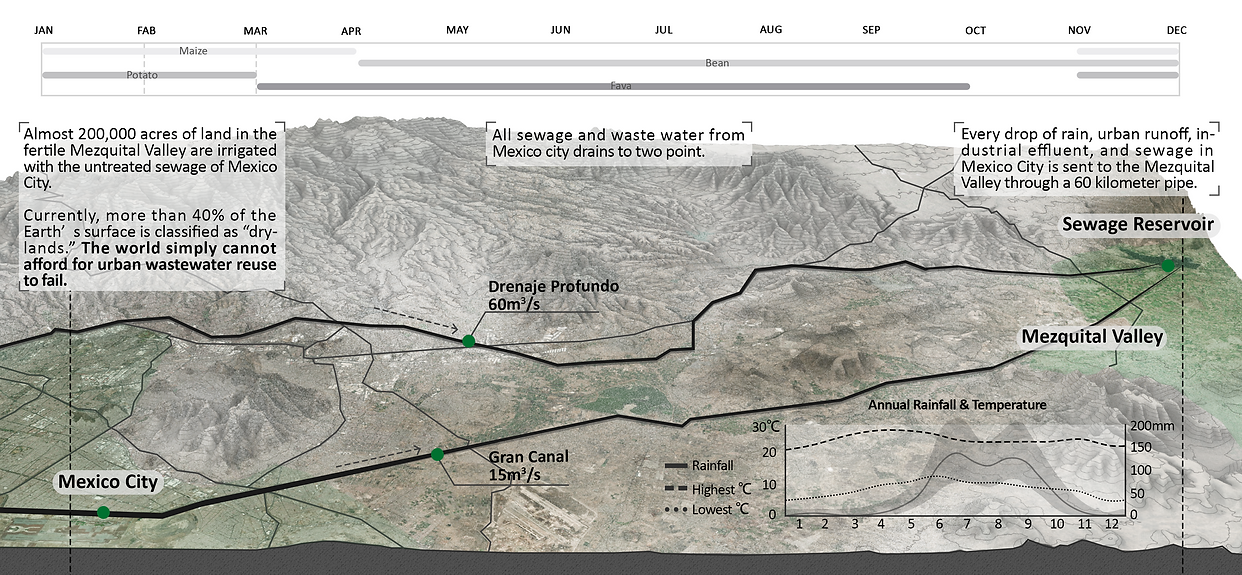Yiling YANG
Not urbanists understanding city best
Me-BioXICO
date. 09/2022
city. Mexico city
type. Landscape Architecture Design
Aquino, E. (2020). Harvest season [Photo]. Unsplash
Video made by Yiling Yang

Nearly 200,000 acres of the fertile Mezquital Valley are irrigated by Mexico City's untreated sewage. Every drop of rainwater, urban runoff, industrial wastewater and sewage from Mexico City is transported through a 60-kilometre pipeline to the reservoirs of the Mezquital Valley.







photography by ©deanchahim
We attempt to establish a combination of experimental sewage treatment and vertical agriculture in the city and propose three measures based on the current situation: natural capital, social system services and traditional farming culture, which on the one hand exponentially reduce the enrichment of harmful substances in sewage for direct irrigation, and on the other hand, the measures guide the formation of a collection of spaces for various functions such as planting, transportation and sewage treatment to maximize spatial intensification.

We attempt to establish a combination of experimental sewage treatment and vertical agriculture in the city and propose three measures based on the current situation: natural capital, social system services and traditional farming culture, which on the one hand exponentially reduce the enrichment of harmful substances in sewage for direct irrigation, and on the other hand, the measures guide the formation of a collection of spaces for various functions such as planting, transportation and sewage treatment to maximize spatial intensification.

At the same time, we emphasize The MILPA Mixed Planting Mode, and stratified planting in a vertical direction; in aquaculture, nitrogen oxides produced by freshwater fish and shrimp are supplied to plants as nutrients, and plants absorb nutrients to purify water and feed them back to fish and finally finish the production cycle.


Vertical farms located in different urban areas will generate differentiated treatment systems and adapted crops according to the different sewage and hazardous substances, and they will participate in the operation of the Mexican city with their own characteristics, forming a reciprocal urban landscape in the foreseeable future.

